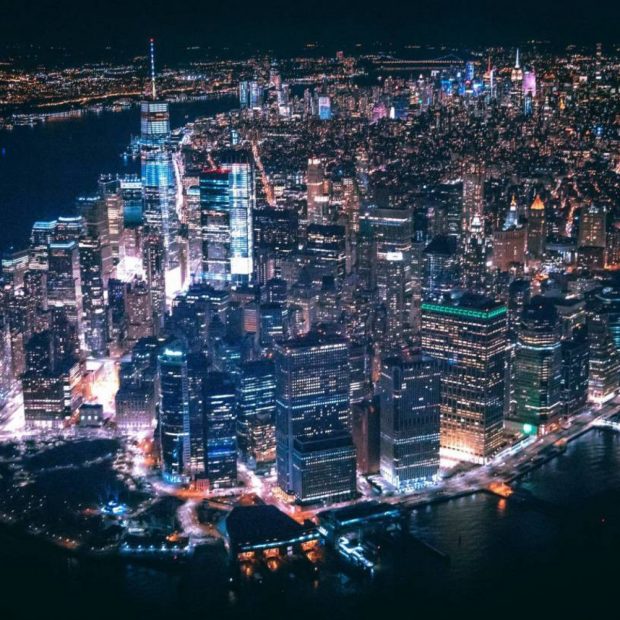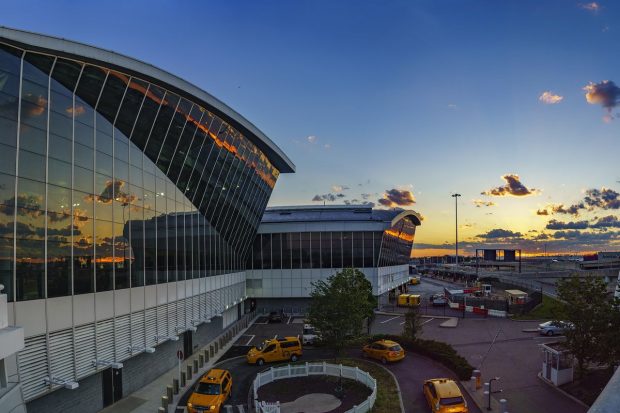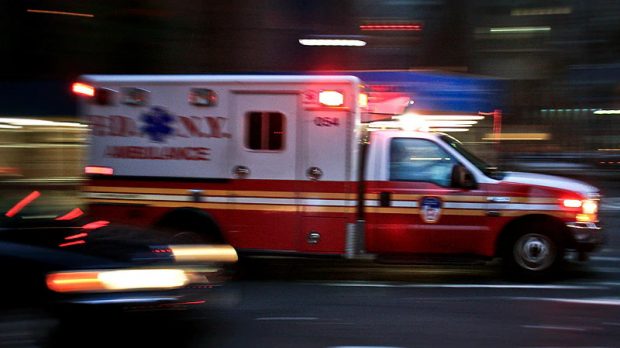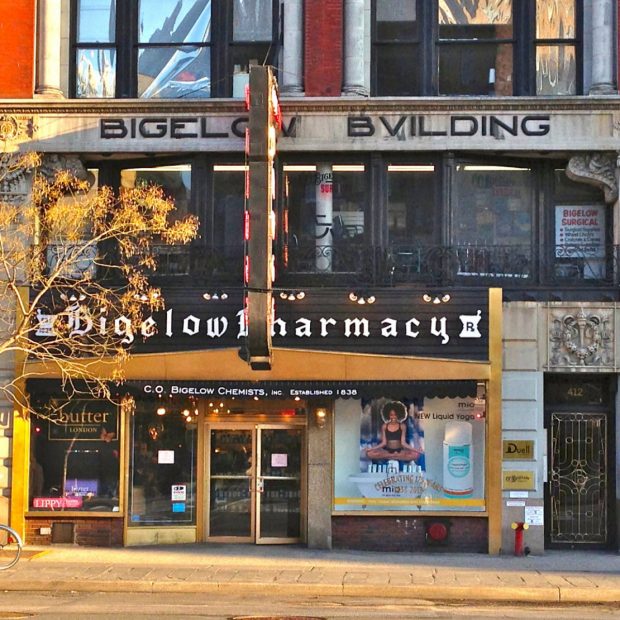
How do I get from the airport to the city? When is the best time to travel? How much tip do I have to give? This profile will help you plan your next stay in New York.

JFK Airport
Instead of getting into a yellow taxi, which usually gets stuck in the rush hour after arriving in the afternoon and costs more than 40 US dollars due to tunnel and bridge tolls and tips, one should use public transport. From Terminals 1-8 at JFK Airport, the elevated train “Air Ride” runs to the subway stations Howard Beach Station and Jamaica Station; From Newark, both buses go to Midtown Manhattan and the “Air Train”: In Newark follow the signs to the monorail and continue by train to Newark station, where trains of the NJ Transit and the Path-Train continue to Manhattan.
When entering the country by plane, the Customs Declaration has already been filled out during the landing approach. Every person over the age of 17 is allowed to import 200 cigarettes and 100 cigars duty-free and from the age of 21 one liter of alcohol. The import of drugs, meat, fruit, and vegetables is prohibited. That’s why little beagle dogs sniff at the suitcases at the baggage carousel at the airport. Foreign currency over US$5000 must be declared. For addresses in the USA, the address of a hotel is sufficient.
READ: Architecture: The Bauhaus Ideas Lived in the USA
Manhattan is absolutely not a place for drivers, since there are hardly any parking spaces and the public transport network is tightly linked. Leaving the city is usually free, and getting there through tunnels and bridges is often associated with tolls.
The electrical voltage is 110 volts. Razors only work if they have switches. An adapter plug (two-pin flat plug) is required for connection to American sockets.

Emergency in New York
The emergency number for police, ambulance, and fire brigade: Tel. 911
In 1524, the Italian seafarer Giovanni da Verrazano was the first white person to set foot in Manhattan.
In 1609, Henry Hudson sailed up the Hudson River in search of the Pacific Ocean.
In 1614 the Dutch establish a trading post and call their settlement New Amsterdam.
In 1624, Peter Minuit, the “General Manager of the New Netherlands”, exchanged the entire island of Manhattan with the Indians for cheap trinkets worth 60the guilders.
In 1644 there was a tax dispute with the native population, and the Indians were almost exterminated.
In 1657 the first Jews from Brazil settled here.
In 1664, King Charles II laid claim to the New Netherlands, the navy anchored off Manhattan, and the city surrendered unconditionally.
In 1741 New York had 10,000 inhabitants.
In 1776 the North American provinces seceded from England. English troops occupy New York for seven years.
In 1789, New York briefly became the capital of the United States.
In 1792 the Wall Street Stock Exchange was founded.
In 1807 the city council decided to divide the streets according to a numbered grid pattern.
Slavery was banned in 1817.
In 1840 the city limits moved up to 14th Street.
In 1857, the ground was broken for Central Park.
In 1880, 5 million people lived in the New York metropolitan area.
The Brooklyn Bridge was dedicated in 1883.
1907 is the peak of the immigration wave with 5000 people per day.
In 1910, the first subway route ran from City Hall to 145th Street
In 1929, “Black Friday” ushered in the global economic crisis.
In 1931 Rockefeller Center was built.
In 1941 the city was darkened at night for fear of attacks by German U-boats.
In 1945, a military plane crashed into the Empire State Building in fog.
In 1964 there was a race riot in Harlem.
In 1965, the power went out in the whole city for one night.
In 1975 the city went bankrupt.
In 1980, John Lennon was shot in front of the Dakota Building.
In 1993, fundamentalists detonated a bomb at the World Trade Center.
In 2001 the two towers of the World Trade Center were destroyed by a terrorist attack.
In 2007, the number of crimes fell by 77 percent in 1990.
The new NYC Visitor Information Center on 7th Avenue between 52nd and 53rd Streets provides on-site visitors with the free Official NYC Guide and Map. Subway tickets or tickets for attractions can also be purchased. Interactive tables and digital city maps help with orientation and the creation of a personal tour plan, which can then be printed out. Opening times: Mon-Fri 8:30 a.m.-6 p.m., Sat/Sun 9 a.m.-5 p.m., on public holidays until 3 p.m. Multilingual Visitor Information: Tel. 001-212-484 1222. The magazine Time Out gives current tips and a calendar of events.
READ: Fashion Industry Boom in New York: What Makes You Want to Invest in “American Fashion”
New York is well served by public transport. In order to be mobile, it is best to buy a Metrocard. These can be bought in the machines in the subway stations with cash, credit card, or at the counter. A single bus or subway ticket is $2. Metrocards range from $2 to $81 depending on the number of trips. Unlimited Metrocards are valid for unlimited rides within a set time period: 1-day Fun Pass ($7.50), 7-day ($25), 14-day ($47). Further information at www.mta.info

Old drugstore in New York
New York hospitals are top class in an international comparison, also in terms of their tariffs. The mostly privately operating companies and also the doctors want to see cash or credit cards.
A call to the emergency number 911 can clarify where the nearest hospital with an emergency room, “emergency”, is located. A doctor specializing in general medicine can be found in the Yellow Pages of the telephone book (“Yellow Pages”) under “physician”, a dentist under “dentist”. Pharmacies are called “drugstores” or “pharmacies”.
The city of New York has several area codes: 212, 917, 646 for Manhattan, Brooklyn 718, and 347 for other boroughs.
“Prepaid phone cards” can be purchased at kiosks that work with public telephones. Local calls from payphones are 25 cents.
Cell phone calls only work with tri-band devices; high roaming costs apply.
January 1: New Years Day.
Third Monday in January: Dr. Martin Luther King’s Birthday.
Third Monday in February: Washington’s Birthday.
Last Monday in May: Memorial Day.
July 4th: Independence Day.
First Monday in September: Labor Day.
Second Monday in October: Columbus Day.
November 11: Veteran’s Day.
Fourth Thursday in November: Thanksgiving Day.
December 25: Christmas Day.
Important holidays that are still worked on Valentine’s Day on February 14th and Halloween on October 31st.
Murder rates in New York have been falling since the early 1990s. As a result of the terrorist attacks of 2001, the police presence in the city has increased again. Bag checks before entering buildings are not uncommon.
But the contrasts between poverty and wealth are still evident, as is drug addict drug-related crime. As in any big city, you have to watch your pockets in New York when it’s crowded.
READ: The Emirates A380 Experience: Emirates A380 Experience in the Dubai Mall
One should still avoid unlit paths in Central Park at night, as well as parts of Harlem, the South Bronx, Washington Heights, and Bedford-Stuyvesant.
Tipping is no small gesture, it is the main part of the income of restaurant staff, taxi drivers, and all service workers. The basic income of the employees is so low that they are dependent on “tip”. The amount depends on the type of service, the rule of thumb is 15-20 percent of the invoice amount, the same applies to taxi drivers. In the restaurant, you leave the tip on the table, even if you pay at a cash register at the exit. Hotel staff charges $1-2 per bag.
The climate fluctuations are extreme in New York: the summer months are humid and hot, snowstorms are not uncommon in winter. During a “blizzard” the airports can also be closed for days. Pleasant and popular travel months are April, May, September, and October.
“Temperatures in the upper 80s” is what the weather report says because the temperatures are measured in a different unit: Fahrenheit. The conversion formula in Celsius causes some headaches: Celsius=Fahrenheit minus 32 times 5 divided by 9.
To make it easier, a comparison table: 23 F (-5 C), 32 F (0 C), 50 F (10 C), 68 F (20 C), 86 F (30 C), 104 F (40 C)
In Fahrenheit, normal body temperature is 98.6, room temperature is 70, 212 is boiling water, and 32 is freezing.
Like us on Facebook for more stories like this: